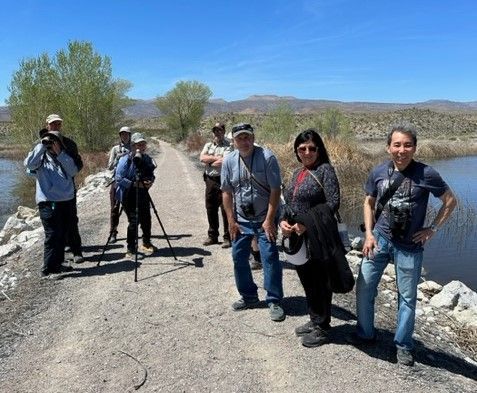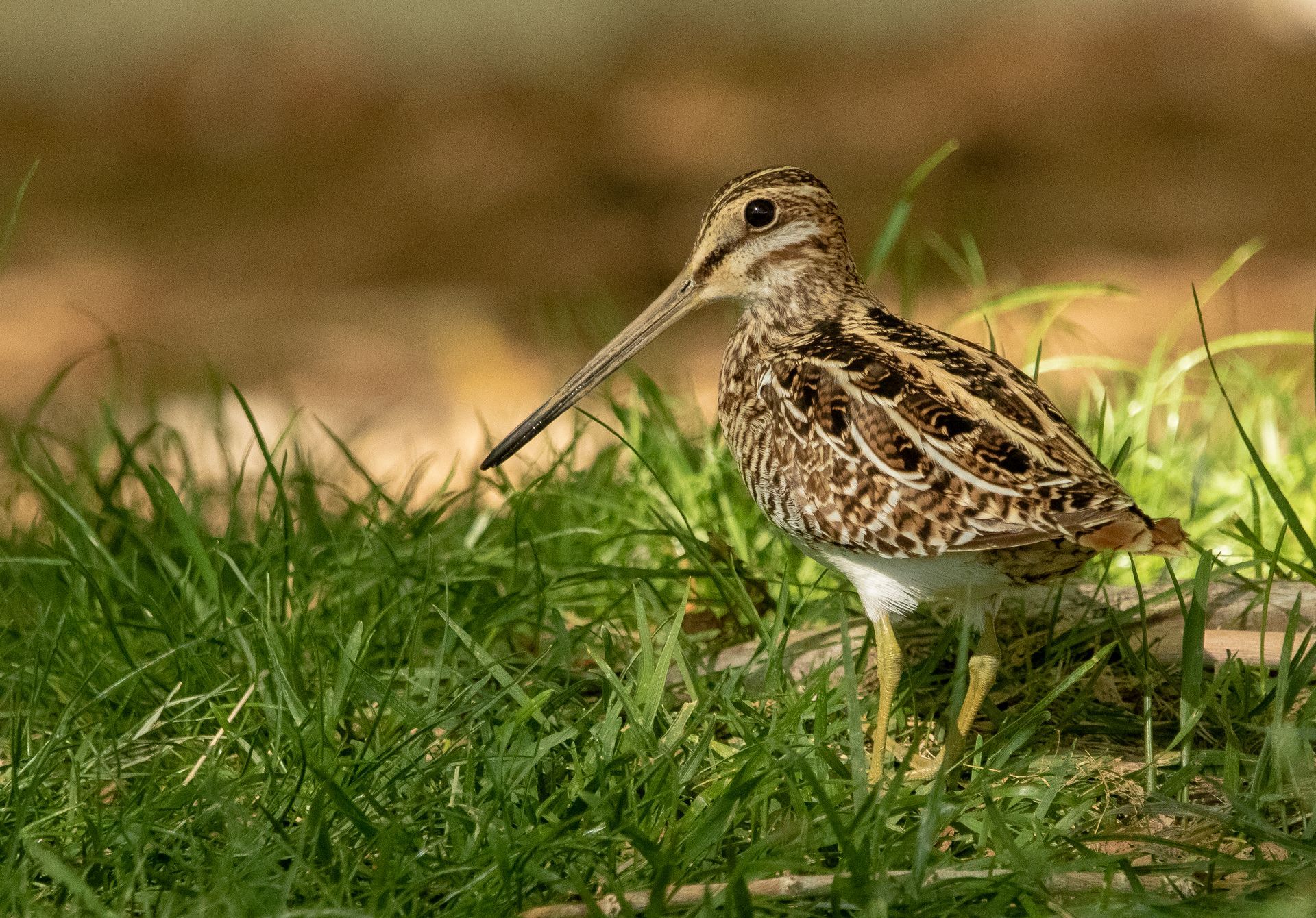The Christmas Bird Count
AN OPPORTUNITY TO CONTRIBUTE TO GLOBAL SCIENCE

By Alex Harper
Early conservation and Christmas Bird Count history
The end of the 1800s and early 1900s marked a turning point for conservation in the United States. During these years, virtually no laws protected wild animals in North America. Unregulated hunting and land development had spread westward to the Pacific coast over the past few decades in name of manifest destiny, and writers and early conservationists recognized that animal populations and habitats were being lost at alarming rates. Species like the Carolina Parakeet and the once abundant Passenger Pigeon were well on their way to extinction.
This was the era where writers and thinkers like John Muir caught the ear of Teddy Roosevelt, who would go on to create the first National Wildlife Refuge in Florida, establish national parks, and create the Antiquities Act. Around the same time, the hunting of herons and egrets for the harvesting of their specialized breeding feathers to adorn the hats of wealthy women had become popular. One of the designers of these hats went by the name of Coco Chanel, who would found the Chanel brand. Two other women, alarmed by the loss of heron and egret populations, on the other hand, would bring people together to establish the Massachusetts Audubon Society in 1896 in efforts to put an end to this practice and protect bird populations. By 1905, the National Audubon Society would be founded in Boston.
Part of the wave in this iteration of the conservation movement that would sweep across the country came in the form of a bird count during December of 1900. A man named Frank Chapman posed a twist on a Christmas holiday pastime that was popular at the time. The twist: counting birds instead of hunting birds for sport, which was a widespread Christmas tradition at the time. On Christmas day, Frank and 26 other birdwatchers counted birds and tallied species. Most of the counts were in New England, but counters in Canada and California also participated. The Christmas Bird Count, or CBC, was born.
The counts today
Today, the Christmas Bird Count has grown to include over 2,600 '“count circles” across the globe, with 70,000 to 80,000 volunteers participating over recent years. Most of these counts take place in the United States. It is the longest-running community science bird project in the United States, and the National Audubon Society manages and compiles this massive effort.
The counts take place between December 14th and January 5th. Birders, nature and science lovers, and biologists of all skill levels and backgrounds participate, and the counts are meant to welcome as many people in as possible as they are meant to gather information on bird populations.
Each count is done in a count circle. Each circle is 15 miles in diameter, and circles do not overlap. Each count circle has at least one compiler, and the compilers have the task of creating count parties, disseminating the count protocols, orchestrating the efforts, collecting data sheets, and sending data sheets to regional compilers. From there, regional compilers skilled in data quality assurance and control compile data from across counts, and then the data is sent to the science team at National Audubon Society. The science team uses different statistical models to further tease out valuable information from the data.
Each party for each circle includes recording bird species information, search effort details, and weather conditions such as temperature, precipitation, and cloud cover. The species detected by observation and/or sound are recorded, as well as the numbers of individuals of each species. Effort details such as the amount of searchers, time spent, route, and method of observation are recorded. Parties are often designated routes to certain areas with a circle to survey specific or key areas to bring some additional standardization to the surveys.
Large studies like the CBC studies provide valuable insights to bird populations and habitat health on very large spatial scales, as well as time scales. From the data, researchers are able to identify trends such as changes in species abundance and changes in species ranges. The last 125 years have been extremely significant for animal and plant populations in North America and worldwide. CBC data, with all of the data points coming in, can provide critical information necessary for conservation efforts, especially when compared in conjunction with results from other studies.
Counts in Southern Nevada
There are six CBCs in Southern Nevada. Red Rock Audubon, as the local chapter of the National Audubon Society, helps to oversee the ones within our purview of Clark, Lincoln, and Nye Counties. All four local National Wildlife Refuges are covered: Ash Meadows, western portions of Desert National Wildlife Refuge to include Corn Creek, Pahranagat, and Muddy River National Wildlife Refuges are all surveyed, with help from refuge staff and partners.
Areas of Red Rock Canyon are surveyed, including Spring Mountain Ranch and Lovell Canyon during the Red Rock Canyon. The Henderson CBC includes neighborhoods and parks in Whitney, Henderson, and Lake Las Vegas, as well as eastern Lake Mead. Locals will understand that Cornerstone Park, Clark County Wetlands Park and the wash, and Henderson Bird Viewing Preserve are all very important areas for the count.
Red Rock Audubon has agreed to help out with an additional count, the Willow Beach, Arizona CBC, just downstream from the Hoover Dam. Western portions of the circle include parts of Southern Nevada, although the majority is best surveyed along the Colorado River.
You can be a beginner and still contribute...Here’s why!
The count compilers often know their participants. Most often, birders and bird biologists familiar with local birds and locations lead parties, and the rest of the party supports by spotting birds, driving, or recording birds on the data sheet. This ensures that most birds detected can be identified and recorded.
Birding or recording data on species does require observational technique and skill, but the protocol is designed to be inclusive in these ways. Party leaders are encouraged to teach and share what they are seeing. This differs from many other scientific study protocols which may have more complicated methods or sampling.
What you record from your backyard or apartment is also valuable. Participants often do a “feeder watch” from their yard. Thousands of people participate in feeder watches nationwide, and all of these data points together provide valuable information for the CBC.
Your next steps:
The CBCs continue to gain popularity, and Red Rock Audubon supports the CBCs by drumming up help from our members, local birders, biologists, and partners.
To sign up for a count, please visit redrockaudubon.com/events.
If you want a bit more information, then tune in for this informational virtual meeting on December 4th from 6:30-8:00 pm: CBC Informational meeting
We look forward to welcoming you to enjoy birds and the birding community in Southern Nevada. We sometimes need to be reminded of the words of Margaret Mead: “Never doubt that a small group of thoughtful, committed citizens can change the world; indeed, it is the only thing that ever has.”
RECENT ARTICLES



